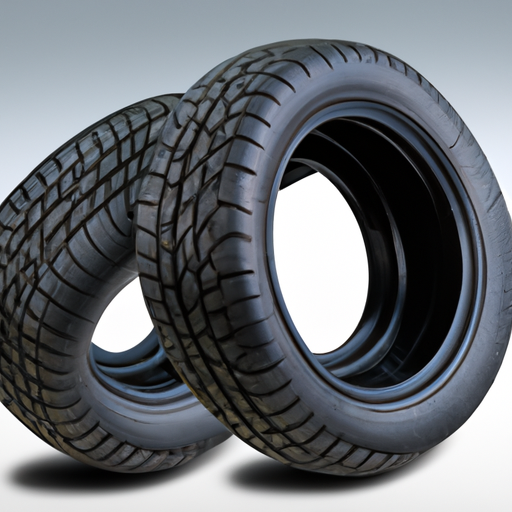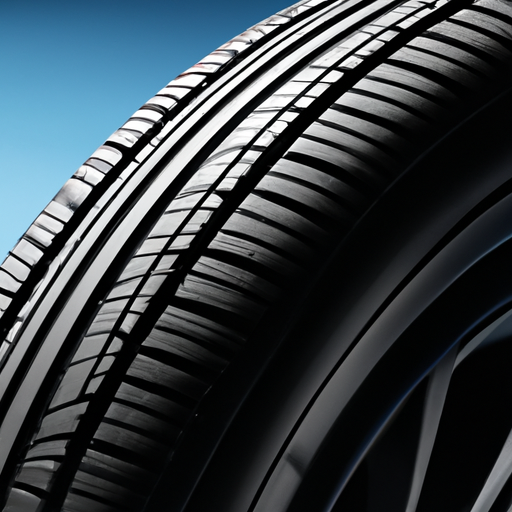When it comes to selecting summer tires, there are several important factors to consider. From performance and handling to safety and durability, choosing the right summer tires can significantly impact your driving experience. This article will explore the key factors you need to keep in mind to ensure you make an informed decision when it comes to selecting the perfect set of tires for your summer adventures. With a wide range of options available in the market, understanding these factors will help you make a choice that suits your specific needs and enhances your overall driving performance.
1. Tire Size
1.1 Matching the Vehicle’s Tire Size
When choosing summer tires, one of the first factors to consider is the tire size that is appropriate for your vehicle. The tire size is typically indicated by a series of numbers and letters, such as “225/45R17”. The first number represents the width of the tire in millimeters, the second number represents the aspect ratio (the height of the sidewall as a percentage of the width), and the last number indicates the diameter of the wheel. It is crucial to select the correct tire size recommended by the vehicle manufacturer to ensure optimal performance, handling, and safety.
1.2 Load Index and Speed Rating
Another important aspect of tire size is the load index and speed rating. The load index refers to the maximum weight that the tire can safely support, while the speed rating indicates the maximum speed at which the tire can effectively perform. When choosing summer tires, it is crucial to select those with a load index and speed rating suitable for your vehicle and intended use. Failure to use tires with the appropriate load index and speed rating can result in poor performance and potential safety hazards.
2. Tread Design
2.1 Directional Tread Pattern
The tread design plays a significant role in the tire’s performance and capabilities. One common type of tread pattern is the directional tread pattern, characterized by angled grooves and channels that typically point towards the front or back of the vehicle. This design is advantageous in terms of water evacuation and helps to reduce the risk of hydroplaning, making it an excellent choice for wet conditions. However, directional tires are less versatile and may not perform optimally in dry or snowy conditions.
2.2 Symmetrical Tread Pattern
In contrast to directional tread patterns, symmetrical tread patterns feature a consistent design across the entire tire surface. This design offers excellent handling and stability in a variety of conditions, including dry and wet surfaces. Additionally, symmetrical tires can be rotated in various directions to extend their lifespan, making them highly durable. However, they do not provide the same level of performance in extreme weather conditions as specialized tires.
2.3 Asymmetrical Tread Pattern
Asymmetrical tread patterns combine the advantages of both directional and symmetrical designs. These tires feature different tread patterns on the inner and outer halves of the tire, allowing for optimized performance in various conditions. The inner portion may have deeper channels for enhanced water evacuation, while the outer portion may have more solid contact patches for improved dry traction and cornering. Asymmetrical tires offer a balance of performance in wet and dry conditions, making them a popular choice for summer tires.

3. Tread Compound
3.1 Performance Compounds
The tread compound refers to the material used in the tire’s tread construction, which directly impacts its performance characteristics. Performance compounds are typically made with a softer rubber blend, providing excellent traction and grip on dry surfaces. This type of tread compound allows for enhanced acceleration, braking, and cornering abilities, making it suitable for high-performance vehicles or enthusiasts seeking optimal handling. However, the softer rubber may wear more quickly, resulting in a shorter tire lifespan.
3.2 All-Season Compounds
All-season compounds are designed to provide a balance of performance and longevity. These compounds are made with a harder rubber blend, offering improved durability and a longer tread life compared to performance compounds. All-season tires excel in a variety of weather conditions, including summer, spring, and fall, but they may not offer the same level of traction and grip on dry surfaces as performance-oriented tires. If you are seeking a versatile tire that can handle a range of seasons and conditions, all-season compounds may be the ideal choice for you.
4. Traction and Grip
4.1 Wet Traction
When it comes to summer tires, ensuring excellent traction and grip on wet surfaces is of utmost importance. The ability of a tire to disperse water and maintain contact with the road is crucial for preventing hydroplaning and maintaining control. Tires with deep, wide grooves and channels are designed to evacuate water effectively, minimizing the risk of hydroplaning and improving wet traction. When selecting summer tires, prioritize those with exceptional wet traction capabilities to enhance safety and performance during rainy conditions.
4.2 Dry Traction
While wet traction is critical, dry traction is equally important for overall performance. Summer tires are specifically designed to excel in dry conditions, offering enhanced grip, responsiveness, and handling. Tires with large contact patches and a tread compound optimized for dry surfaces can provide exceptional acceleration, braking, and cornering capabilities. When choosing summer tires, consider those with a tread pattern and compound geared towards dry traction to ensure maximum performance in sunny weather conditions.
4.3 Cornering Grip
Cornering grip is a vital aspect of tire performance, especially for those who enjoy spirited driving or want to feel confident when taking corners. The sidewall construction, tread pattern, and compound of summer tires contribute to their cornering grip capabilities. Tires with a stiffer sidewall and a tread pattern designed to provide increased contact surface in corners can offer exceptional grip and stability during high-speed maneuvers. If you value precise and confident cornering, prioritize summer tires with excellent cornering grip.

5. Rolling Resistance
5.1 Fuel Efficiency
Rolling resistance refers to the force required to keep a tire rolling. Tires with lower rolling resistance can offer improved fuel efficiency by reducing the energy required to move the vehicle. Summer tires are often engineered to provide lower rolling resistance, which can result in enhanced fuel economy and prolonged mileage. When considering summer tires, look for those with features and advancements aimed at minimizing rolling resistance, allowing you to save on fuel costs while enjoying excellent performance.
5.2 Environmental Impact
Apart from fuel efficiency, choosing tires with low rolling resistance can also have a positive impact on the environment. By reducing the energy required to propel the vehicle, tires with reduced rolling resistance contribute to lower carbon dioxide emissions. When selecting summer tires, consider the environmental impact and opt for those with eco-friendly features. By choosing tires that help minimize your carbon footprint, you can contribute to a greener and more sustainable future.
6. Handling and Stability
6.1 Responsiveness
Handling and responsiveness are crucial factors when it comes to choosing summer tires. Responsive tires provide immediate feedback to your steering inputs, allowing for precise and confident control of your vehicle. Tires with a stiffer sidewall and advanced tread design can offer improved responsiveness, allowing you to navigate corners and sudden maneuvers with ease. When selecting summer tires, prioritize those that offer excellent handling and responsiveness to enhance the overall driving experience.
6.2 Stability at High Speeds
For those who often travel at higher speeds or enjoy long highway drives, stability becomes a significant consideration. Summer tires with features designed to ensure stability at high speeds can provide a smooth and controlled driving experience. Tires with reinforced sidewalls and tread patterns optimized for stability can effectively minimize vibrations and maintain a steady grip on the road even at increased speeds. If high-speed stability is a priority, look for summer tires that are engineered to provide a stable and comfortable ride.

7. Noise and Comfort
7.1 Noise Level
The noise level produced by tires can significantly impact the overall comfort of your driving experience. Excessive tire noise can be distracting and create a less enjoyable ride, especially on long journeys. When choosing summer tires, consider those with noise-reducing features, such as advanced tread technology or noise-canceling technology. These innovations can help minimize road noise and provide a quieter and more comfortable driving experience.
7.2 Ride Comfort
In addition to noise level, ride comfort is an essential aspect to consider when selecting summer tires. Tires with features aimed at enhancing ride comfort, such as a softer sidewall or advanced shock-absorbing technology, can provide a smoother and more comfortable driving experience. A comfortable ride can greatly reduce driver and passenger fatigue, making long trips more enjoyable. Prioritize summer tires that prioritize ride comfort to ensure a pleasant driving experience even on rough or uneven road surfaces.
8. Durability and Longevity
8.1 Mileage Warranty
Durability and longevity are crucial factors to consider when investing in summer tires. The mileage warranty provided by tire manufacturers can give you an idea of the expected lifespan of the tires. A longer mileage warranty often indicates that the tires are designed to last, providing extended use and value for your investment. When selecting summer tires, pay attention to the mileage warranty offered and opt for those with a warranty that aligns with your expected usage and driving habits.
8.2 Treadwear Rating
In addition to the mileage warranty, the treadwear rating is another important indicator of a tire’s durability. This rating is a numerical score provided by the tire manufacturer, indicating the tire’s relative resistance to wear. A higher treadwear rating suggests a longer tread life, meaning the tire is less likely to wear out quickly. When evaluating summer tires, prioritize those with higher treadwear ratings to ensure optimal longevity and minimize the frequency of tire replacements.

9. Budget and Price
9.1 Price Range
When choosing summer tires, it is essential to consider your budget and price range. Tires can vary significantly in price, depending on their brand, features, and performance characteristics. Determining a budget before shopping for summer tires can help narrow down the options and prevent overspending. However, keep in mind that while price is a consideration, it is crucial to prioritize quality, performance, and safety when selecting summer tires to ensure optimal driving experience and longevity.
9.2 Value for Money
While price is an important factor, it is equally important to consider the value for money when choosing summer tires. Consider not only the upfront cost but also the overall benefits and features offered by the tires within your price range. Look for tires that provide a balance of performance, longevity, and safety features to ensure you are getting the most value for your investment. Remember, the cheapest option may not necessarily provide the best performance and durability, so weigh all factors before making a decision.
10. Weather Conditions
10.1 Average Temperature
The average temperature in your region should also influence your decision when selecting summer tires. Summer tires are specifically designed to provide optimal performance in warmer weather conditions. The tread compound and design of summer tires are engineered to work best at higher temperatures, delivering excellent grip and traction. If you live in an area with hot summers, selecting summer tires is crucial for ensuring maximum performance and safety during the warmer months.
10.2 Rainfall
Consider the average rainfall in your area when choosing summer tires. While summer tires excel in dry conditions, they should also provide reliable performance in rainy weather. Look for summer tires with excellent wet traction capabilities, as indicated by their tread pattern and specialized grooves designed to channel water away from the tire’s contact patch. This will help minimize the risk of hydroplaning and ensure you can maintain control and safety even in wet conditions.
10.3 Summer Climate
The overall summer climate in your region should be taken into account as well. Some areas experience hotter and drier summers, while others may have more rainfall or even occasional thunderstorms. It is crucial to choose summer tires that are well-suited to the specific climate conditions you are likely to encounter. By considering the weather patterns and climate in your area, you can select summer tires that are optimized for the conditions you will be driving in, providing you with the best possible performance and safety.


